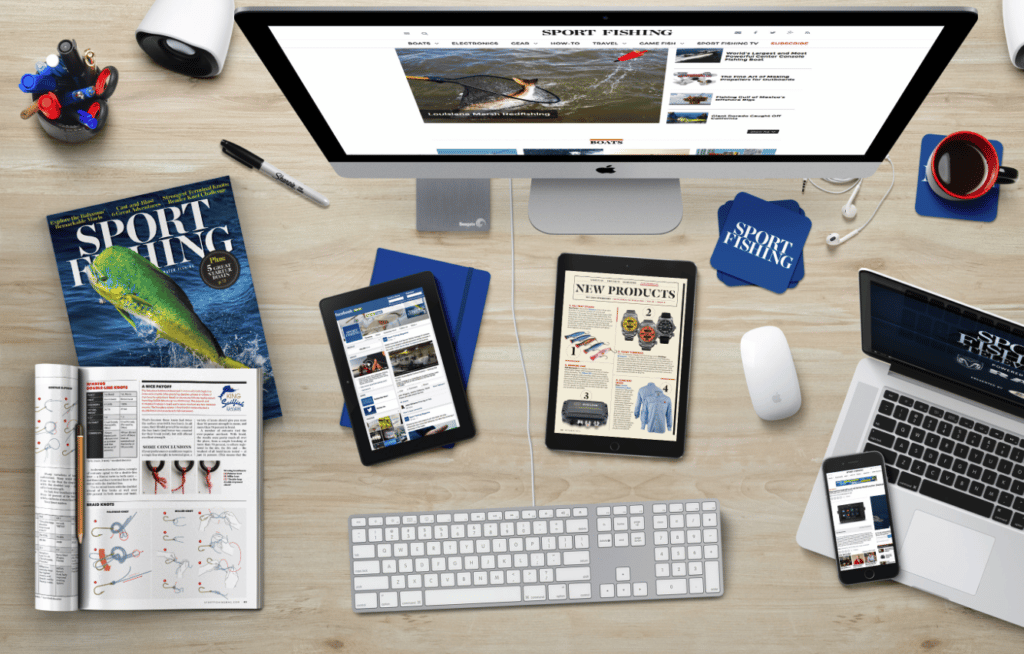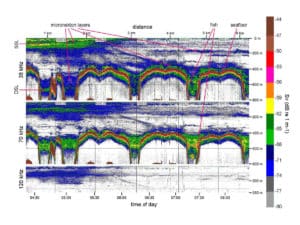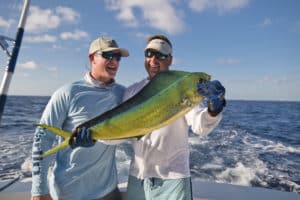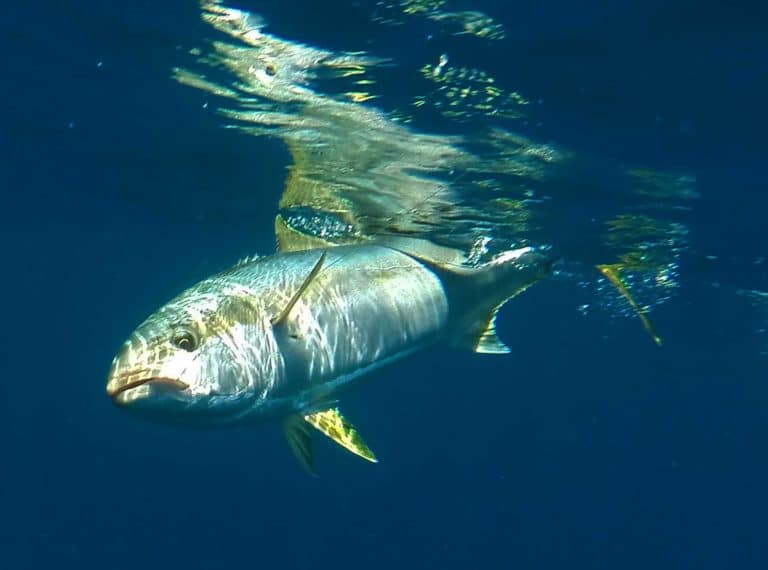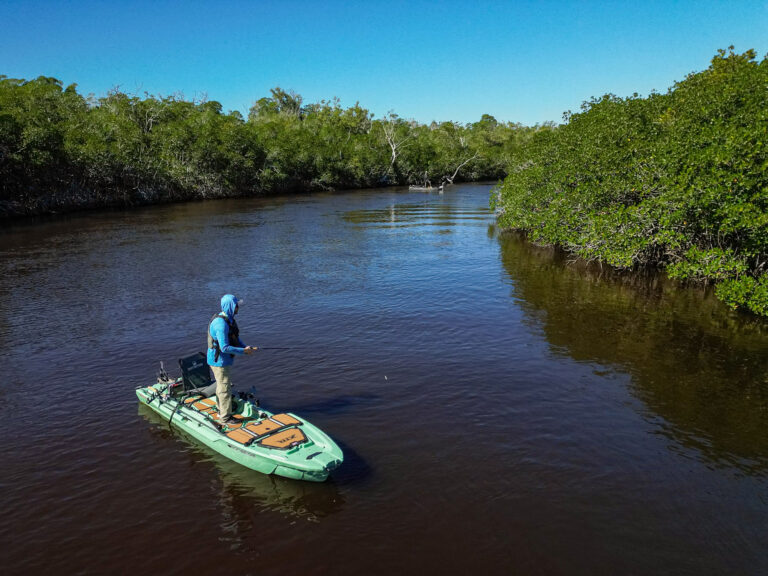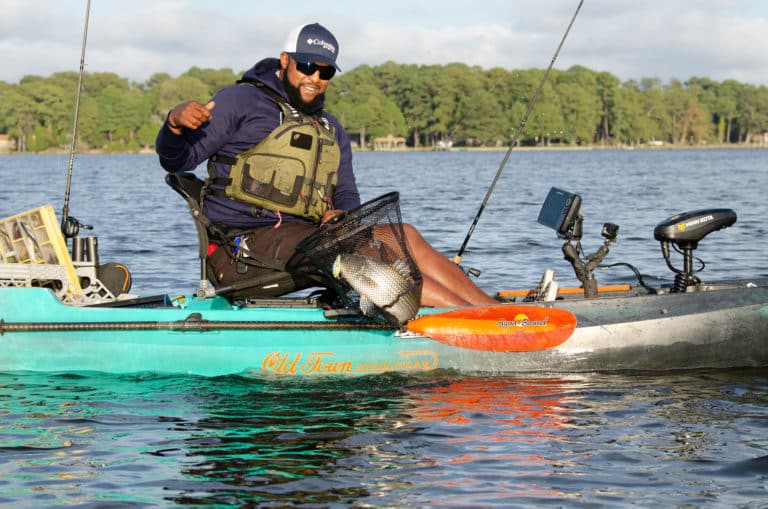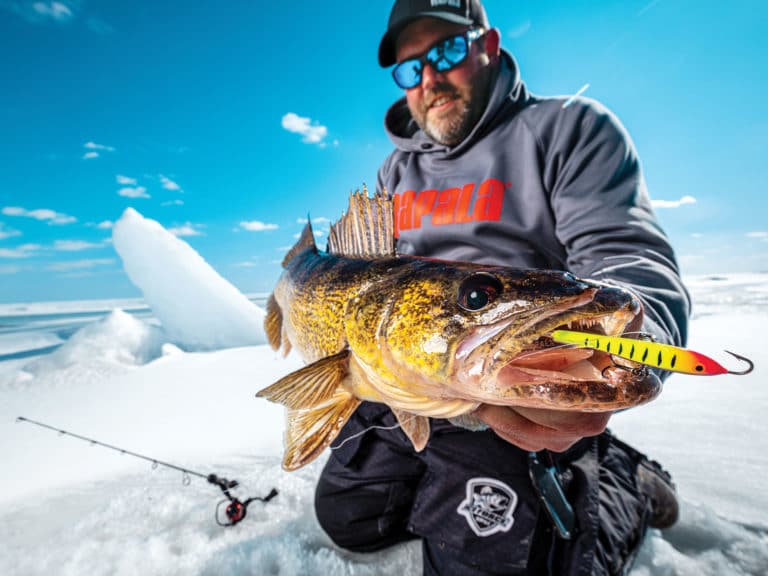Background
Sport Fishing is geared to serious saltwater fishing around North America and at times beyond. That means bluewater and reefs; nearshore (inlets and off beaches) and inshore (bays, flats and backcountry). We publish nine regular issues per year (monthly January-June; bimonthly July-December). Our readers: several-hundred thousand (over 80,000 paid circ. nationally) are generally well-educated and quite affluent. Nearly all are mature men who own boats, often both a large offshore boat and skiff as well.
Editorial Content
Material in Sport Fishing should provide useful information about saltwater fishing which is (1) new/fresh/different; (2) specific/in-depth and (3) accurate. Concepts behind all queries should meet these criteria. Please don’t submit an idea that has been written about extensively by us and/or similar publications.
Fishing features written about great outings are a dime a dozen.
Find a fresh idea or a fresh angle to an old idea; like many better publications, we too are looking for subjects that will have our readers saying, “I never knew that!” Examples of material that could be of interest: a new, effective technique for a species or type of fishing that has wide applicability; an area recently opened up to sport fishing; or a new look at conservation concerns regarding a particular fishery or species/group. As with any magazine, our very specific needs are best understood by studying recent issues.
Features
We strive for a mix of genres including fishing how-to, where-to, gear and its use, science and conservation — but are particularly enthusiastic about solid how-to features. Remember that our readers are seldom beginners; they’re seeking to advance their knowledge, not rehash basic saltwater fishing. We cannot use material related to pier/jetty/surf fishing; a boat must be involved if an idea is to work for Sport Fishing.
Departments
Currently Sport Fishing‘s departments are all staff-written.
Queries and Submissions
We’ll look at over-the-transom submissions, but your efforts are much more likely to bear fruit if you query us first. Please submit an e-mail to editor@sportfishingmag.com. We will pass queries to the appropriate editor. Laundry-list, written queries are a welcome initial step and should be sent in the spring. Normally we will contact prospective authors during the summer, once the following year’s editorial content is tentatively scheduled.
Sport Fishing readers are not beginners; they’re seeking to advance their knowledge, not rehash basic saltwater fishing.
If a query warrants a speculative submission, then communication between editor and writer becomes the key to making things work. An editor will send a feature proposal to reiterate exactly what we expect in terms of substance, slant, style, length, sidebars, maps/charts and of course deadlines and request a response. Often, Sport Fishing editors request some sort of outline from the writer. Generally, this step is an invaluable way to (1) make sure the writer doesn’t waste his/her time on something not right for us and (2) in general maintain close communication between writer and editor to make sure what the writer thinks the editor wants is in fact what the editor really wants. Often the outline may need some revision, so when the writer actually begins writing the feature he’ll be on the right track. Finally, if questions develop as you work, drop the editor an e-mail or call to discuss it. We welcome the opportunity to work with new/unestablished writers who know their stuff — and how to say it.
Submitting Features/Departments
Typically, features will run 1,800 to 2,400 words, including sidebars. Try to keep the length of your features within the range requested — avoid submitting rambling 8,000-word manuscripts. If extensive rewriting is necessary, we like to work with the writer to resubmit the feature to meet our needs. However, again, writer-editor communication before and during the time the feature’s written should minimize the chances of major rewrites.
Format for Submissions
Plan to e-mail your text as a Word document. Of course you need to make sure your header contains your address (email, post); phone and social security numbers. Send maps, illustrations, charts/diagrams as well as photos separately.
Payment
Upon assignment acceptance, you will be contracted by our managing editor Stephanie Pancratz (stephanie.pancratz@bonniercorp.com). Payment is initiated once the manuscript has been reviewed for acceptability. For print features, we pay $750. Please keep in mind that Sport Fishing pays over/above for images (contributors who have great photos for their manuscripts can earn up to $1,500 per longer feature). For digital features, we pay $200 for up to 1,000 words and $300 for more than 1,000 words.
See our photo guidelines for a complete rate schedule. We normally secure All Rights contracts.
Tips for Contributors
Meet or beat deadlines. We like to work with writers we can count on. Also working on deadline gives us time to make any adjustments necessary.
AdvertisementInclude quality photos when you can. Not only do they help sell your package, but we pay for images in addition to payment for manuscripts. See our separate photo guidelines.
Quote the experts. When possible, interviewing one or more professionals (skippers, mates, tournament experts, industry/manufacturer insiders or the like gives a subject great credibility. Also, wherever appropriate, contact fishery managers/biologists regarding status of species/fisheries. (Often they can provide tables, graphs, charts, etc. to help illustrate a topic.)
Balance information with readability. Anecdotes can impart information while lending human interest. These are safest in third person but there are times when first-person narrative, if not overdone, is useful. Avoid talking down to our informed readership, but also avoid sounding ponderous or using $10 words when 5-cents’ worth says it clearly.
Include sidebars; we like 2 to 3 topical sidebars, usually with a photo or illustration where possible. (see recent issues for examples of these sidebars) With any feature that has to do with a destination, include information on travel, lodging, charters/guides etc. We also like to see a seasonal availability chart for species (a hand sketch is acceptable): See recent issues for examples of required format. If a feature has to do with a genre of product, include a sidebar listing manufacturers.
Reprinted from Boating Writers International Journal, September 2005, by Doug Olander
“First, pick a great topic. This most essential step seems to be a stumbling block for some writers. Based on what I see from many freelance contributors, if a fishing trip was great, a feature on that trip should be great. If only it were that simple. Frankly, features written about great outings are a dime a dozen. They do seem to be the bread-and-butter for the average fishing journalist — and why not? If you can wangle your way down to Costa Rica or wherever by selling a feature, you should do it!
But I’d look outside that destination-feature box for memorable topics. My most prestigious contest awards have been for features that fall not in the where-to category, but for informational features (historical, scientific, conservation and particularly — how-to). Ah, but the second critical step of doing the research, which is usually marvelous great fun for a destination feature, may be a whole lot less fun for informational articles. Many queries come across my desk (these days, actually, my screen) each year. Most concern where-to articles based on fishing trips, and most of those we must reject for various reasons. A paltry few offer the sort of great ideas for informational features that I’m all over when I see them. This isn’t to say, by the way, that great features do not come from “fishing trips.” But that happens far less often.
Second, gather great information. Doing research is usually interesting, and (more than ever, thanks to the astounding powers of the Internet) uncovering cool stuff can be deeply satisfying. At the same, it is often tedious and may require great patience and effort. Moreover, the rule of thumb that has always served me very well is: Leave no stone unturned, vary your sources (to include interviews with direct quotes as well as published material) and save everything. If, when ready to begin writing, you have far more information than you can ever possibly use, you’ve done your homework.
For a feature on “high-velocity game fish” that I wrote a few years ago (still one of my favorites), I ended up with reams of literature photocopied and (from downloads) printed out. I spent a few days with highlighter in hand, reading and making marginal notes. Plus I had many pages of notes from personal interviews to wade through. Having all that organized in front of me made the third step, of writing the thing, decidedly untraumatic. But here’s a caveat. I’m an editor; I’m paid for my time to do all this (granted, that will be part of the many hours above/beyond some mythical 40-hour workweek). Freelancers don’t enjoy that luxury.
Third, write a great article. You’ve got the topic and have done the research. Now your skills as a writer and ability to understand what an editor wants for his/her audience should permit you to write an award-winning fishing article!”
